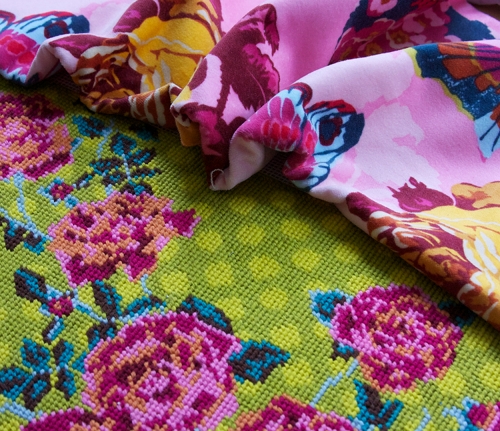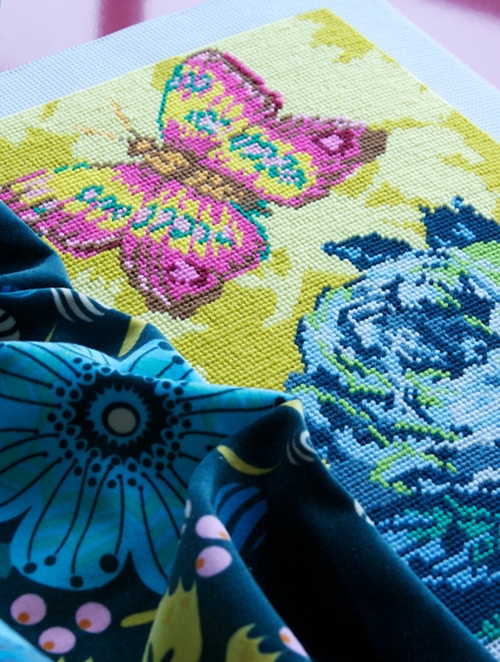Notes on Needlepoint

Today, needlepoint is on my sewing list. I am working on some bag patterns that will include needlepoint panels in their design which has me incredibly giddy. If you are familiar with how to sew a needlepoint into a pillow front, then sewing one into any other sewn good is not much different. And even if you're not quite sure, it really works out in the most logical way, keeping your machine sewing seam line right into the last stitched row around the perimeter of the work. This is easiest when you have the wrong side of the needlepoint facing you as you sew it to a pillow back, bag back, etc. Just pretend like you're sewing with really thick fabric, which is really all it is... so use a bigger needle, take your time, and all those things. I also think that velveteen is the perfect pairing with a needlepoint as a pillow back or otherwise. The weight and textures are perfect together.

So if you needed any suggestions about my favorite pairings, here you go. And please don't allow yourself to believe that I have single-handedly stitched up these two tapestries in the time since their release in April. No, dearies. Anchor was kind enough to send along some finished samples. (Phew.) Though I have to say, I am about 1/3 of the way through that Polka Dot Rose, because I couldn't hold out longer that about 5 minutes once the kit samples arrived late last fall. I am so patient.
On the note of the actual stitching, I wanted to clarify something for those of you who might be using the kits in conjunction with the Needlepoint Know-how pdf that is available on my Make page. The "tent stitch" which is used to complete these needlepoint designs can be made with 3 different methods, which the pdf illustrates. Each method takes a different amount of wool to complete, so many use the simple half-cross stitch because it uses the least amount of wool. However, I asked Anchor to include enough wool in the kits to be able to perform at least the continental stitch method which uses a little more wool, so that stitchers could have their choice of at least two methods. While they did include this amount of wool in the kits they did not amend their kit instructions to note this, but rather they suggest using the half-cross method. I was thrown off at first until I got confirmation form Anchor that there is indeed enough wool to do the continental method. So this is why even our descriptions of the kits mention the same because I didn't want my descriptions to be in conflict with Anchor's. Okay? Okay. Anyway, I think that they will amend the instructions on the next printing so that it reflects this fact.
Back to it,
stitches & kisses, Anna



Comments